Blueberries are probably my favorite berry. They are soooo yummy, whether I’m eating them plain, in oatmeal, over ice cream or frozen yogurt, as a cheesecake topping, in pancakes, or pretty much any other way. Blueberries are just delicious! What a lot of people don’t realize is that we have many species of native blueberries.
Blueberries are in the genus Vaccinium and there are around 22 species native to eastern North America. They can be found from Canada to the Gulf Coast. There are even more species of blueberries that are native to other parts of the continent, and even the world.
Vacciniums are important keystone plants and are used by a wide variety of pollinators and wildlife. In the eastern U.S., the bell to vase-shaped blooms are attractive to a wide range of butterflies and native bees, including 14 species of pollen specialist native bees.
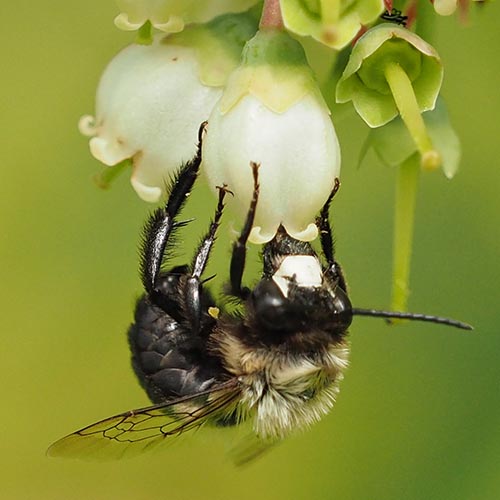
They are a host plant for around 217 species of caterpillar, including the huckleberry sphinx moth (Paonias astylus). Deer will also eat the foliage. Birds will nest in blueberry thickets and use them as escape cover along with many species of mammals, reptiles, and amphibians.
And of course, you can’t forget the berries. Tons of birds and mammals will eagerly eat the fruit, often before it is fully ripe. If you’ve ever tried to grow blueberries, you know that it can be a race between you and the critters to see who gets the berries.
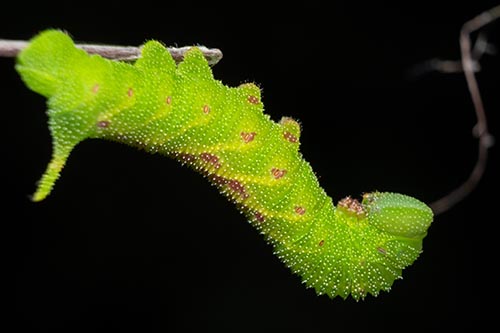
Special considerations when growing blueberries
There are some special considerations you need to take into account if you want to grow blueberries, whether they are wild type native species or any of the many cultivars. The primary special consideration is that they need acidic soils.
Just as a quick chemistry refresher, the pH scale is a measure of how acidic or basic a solution is. It goes from 0 to 14. Seven on the scale is considered neutral and anything below 7 is considered acidic. It’s a logarithmic scale so there is a pretty big difference between 6 and 7, or any other two numbers.
Most garden plants do their best with a pH around 6.5, so very slightly acidic soil. Blueberries are not most garden plants. They require soil with a pH of 4 to 5 with 4.5 being optimal – that is about the acidity of orange juice. For most of us, our soils aren’t anywhere near that acidic.
So, how do you get the soil acidic enough for blueberries? The easiest way is to plant them in a raised bed or a mound with an acidic soil mix. This is much easier to do than trying to amend the soil in the ground and has the added benefit of creating the well-drained soil environment that many of the blueberries prefer. If you want to plant blueberries on a larger property for wildlife and pollinators, I suggest only planting them in the areas that naturally have your most acidic soils. Things are much easier when you don’t fight Mother Nature.
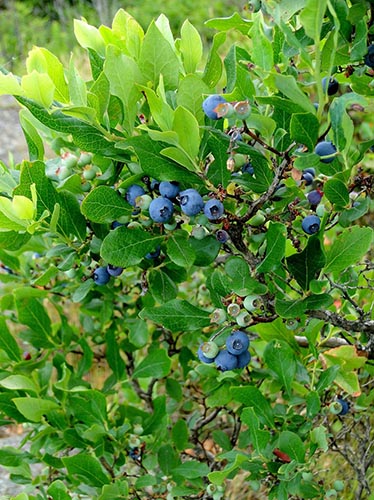
Also, you’ll need to plant more than one blueberry bush because they’re usually self-infertile which means they can’t pollinate themselves. Many of our blueberries will send up suckers and can produce thickets, but those are all clones and so count as the same bush. In other words, you’ll still need at least two separate bushes if you want them to produce any fruit.
Another thing to be aware of when purchasing blueberries is that there are multiple cultivars of many of these species. Many of the cultivars have been selected for better fruit production and / or outstanding fall color. Whether or not you choose to purchase a cultivar, knowing that they exist can help you be more aware of what you are purchasing so that you can make informed choices.
Species overviews
So, let’s talk about 9 species that are native to at least some part of the eastern U.S., and are relatively easy to find for sale at native plant nurseries. But remember, just because it is native to some part of the eastern U.S., doesn’t mean that it is native specifically to where you live. You’ll still need to check to see if it is native to your location.
Lowbush blueberry (Vaccinium angustifolium)
The lowbush blueberry is found mostly in the northeast, the upper Midwest, and the mountains of West Virginia, North Carolina, and South Carolina. This is a small shrub and averages around 1 to 2 feet tall with an equal spread. It produces suckers and can form a thicket of small, round bushes.
The shrub produces clusters of small, bell-shaped, white to light pink flowers in the spring. The ripe blueberries appear in the summer to early fall and are sweet, dark blue berries. Ripe berries are often coated with a whitish bloom. The whitish bloom on the fruit is completely natural and nothing to worry about.
Lowbush blueberry is adaptable to a wide range of soil textures with high organic matter. They can be found doing well in moist to somewhat dry, and even droughty well drained soils – as long as the soils are acidic. It can also grow in full sun to partial shade but will produce more fruit and have better fall color when grown in full sun.
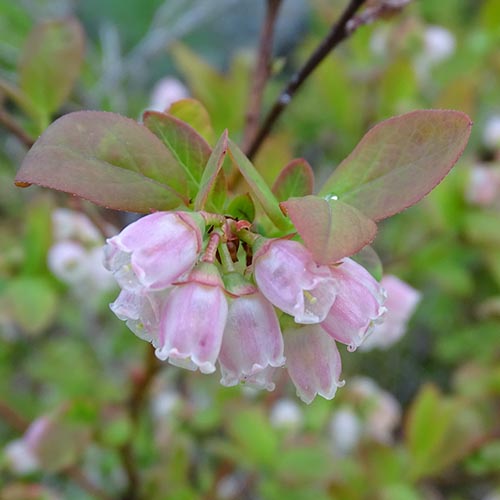
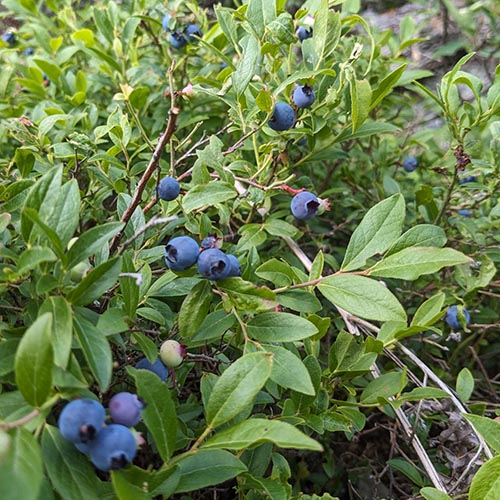
Early lowbush blueberry (Vaccinium pallidum)
The early lowbush blueberry is found mostly in the Northeast, Mid-Atlantic, Appalachian Mountains, Ozarks, and a few other locations. It is another relatively small shrub that normally grows from 2 to 3 feet tall with an equal spread. Like the lowbush blueberry, the early lowbush blueberry will sucker and form a thicket if allowed to do so. (Yes, these common names can get confusing. That’s why we have scientific names.)
The flowers form in clusters during the spring and are white to pinkish in color. The small, sweet, blue berries ripen in the summer.
Early lowbush blueberry requires well drained, acidic soils. It is tolerant of shade but will produce more berries and have the best fall display of orange to red leaves when it is growing in full sun.
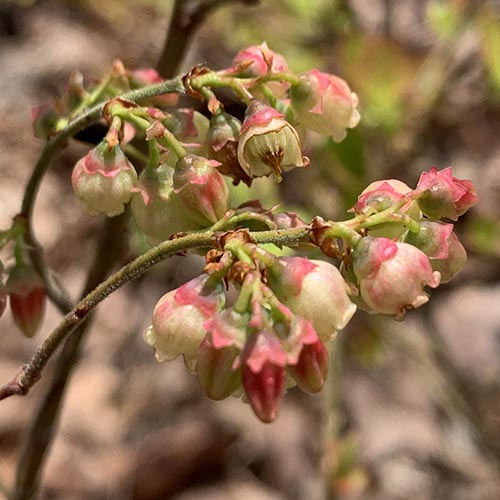
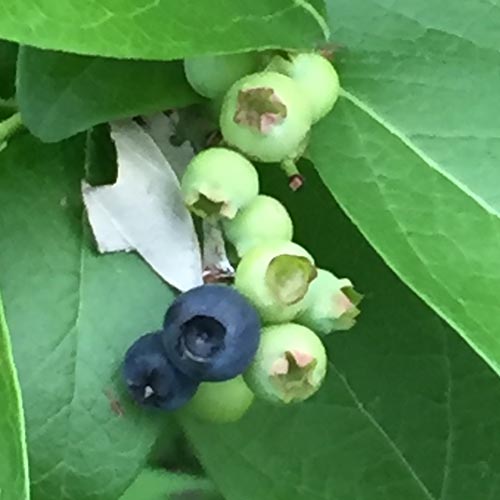
Velvetleaf blueberry (Vaccinium myrtilloides)
Velvetleaf blueberry is named for its leaves which have very fuzzy undersides and stems. It is mainly found around the Great Lakes, the Northeast, and rarely into the mountains of Virginia and North Carolina.
This is another shorter blueberry which tops out around 1 to 2 feet tall with an equal spread. It can spread from suckers and in the wild is often found as a colony of little, round, fuzzy blueberry bushes.
Velvetleaf blueberry flowers and berry clusters look similar to those of most other blueberry species. However, the blueberries are a little tarter than those of the previous two species.
It prefers well drained, sandy to rocky, acidic soils and full sun to partial shade. As with our other blueberries, berry production will be best in full sun, as will its reddish fall color.
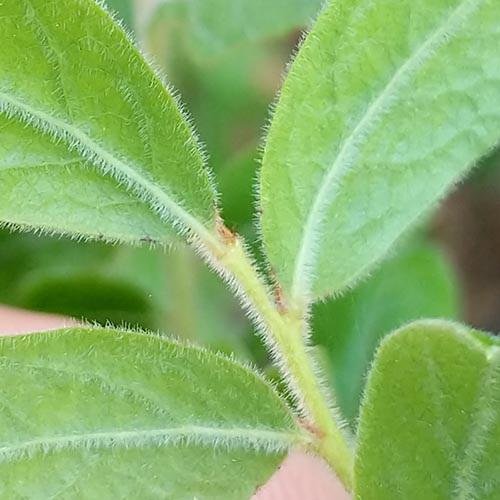
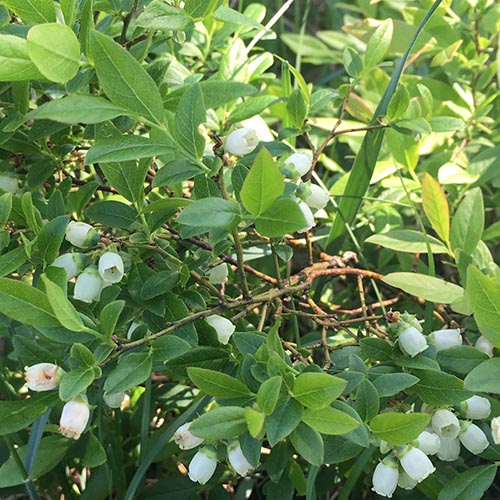
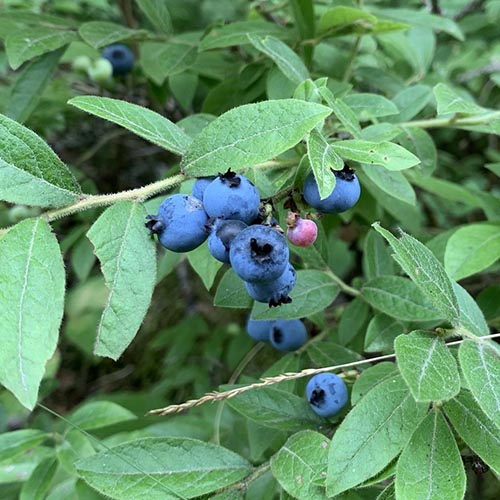
Elliot’s blueberry or Mayberry (Vaccinium elliottii)
Elliot’s blueberry or mayberry is restricted to the Southeast. It falls into the highbush blueberry category because it is taller than any of the species we’ve discussed so far. Elliot’s blueberry usually grows to between 4 and 6 feet tall. It will also produce suckers and form a thicket given time.
The flowers look much like any other blueberry flower. The ripe berries are shiny, dark blue to almost black.
Like most other blueberries it prefers well drained soils that are acidic. However, Elliot’s blueberry likes its soil to be a little on the moist side. For the best berry production plant more than one and place it in full sun. However, it can handle part shade. The attractive green foliage will turn shades of maroon and purple in the fall.
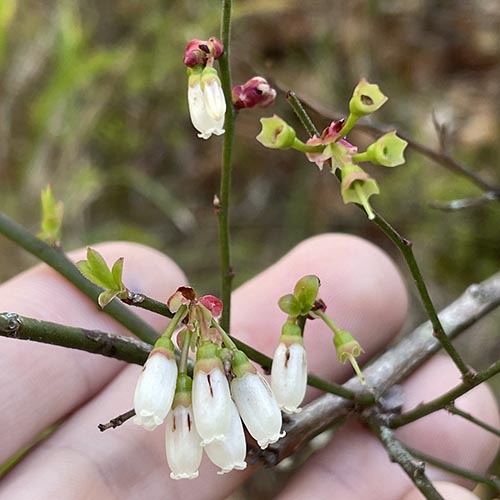
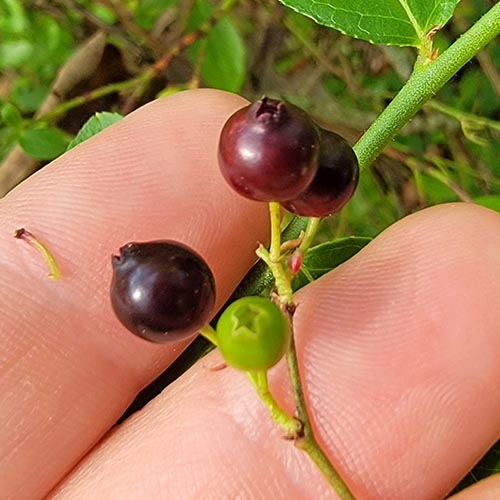
Black highbush blueberry (Vaccinium fuscatum)
Black highbush blueberry is a taller blueberry with a relatively large native range in eastern North America. It averages 3 to 12 feet tall with a 3 to 10 foot spread. Like many other blueberries, black highbush blueberry will form a thicket if allowed to do so.
It has white bell-shaped flowers that produce large, juicy, tasty, shiny black berries. You’ll get the most berries from plants growing in full sun.
This is kind of an odd blueberry because it prefers moist to wet soils that may be occasionally dry. As with all blueberries, soil acidity is a must! Black highbush blueberry has great fall color in shades of red. The leaves may persist into the winter.
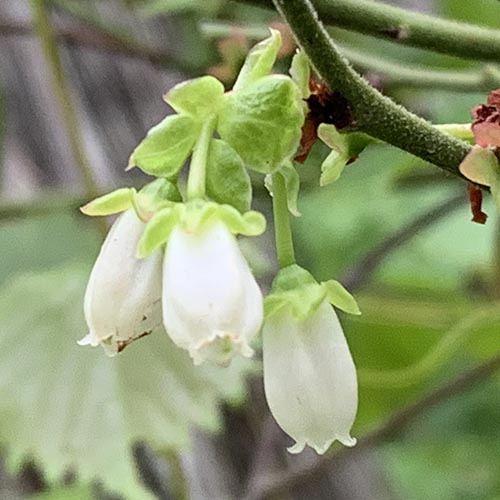
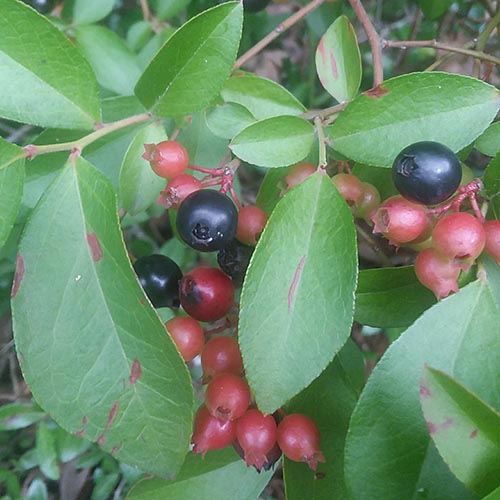
Sparkleberry (Vaccinium arboreum)
Sparkleberry’s native range is mainly from the Ohio River Valley south. It’s kind of a weird blueberry for a couple of reasons. First, it tends to have a single trunk and looks more like a small blueberry tree, than a blueberry bush. It typically grows to between 8 and 15 feet tall, with a 4 to 10 foot spread. However, given time, it will form a thicket of single trunked shrubs.
Like most blueberries, it has white bell to vase-shaped flowers in the spring. In the fall, the ripe berries are black and shiny, which is where it gets the common name of sparkleberry. The berries may persist into the winter, if the wildlife and birds don’t eat them first. However, most people will probably prefer other types of blueberries because sparkleberries tend to contain less juice and more seeds than many other blueberry species.
Another reason that sparkleberry is kind of weird is that it doesn’t need nearly as acidic soils as most other blueberry species. It can handle a wide range of moist to sometimes dry soils that are acidic to slightly acidic. It can also grow in full sun to partial shade.
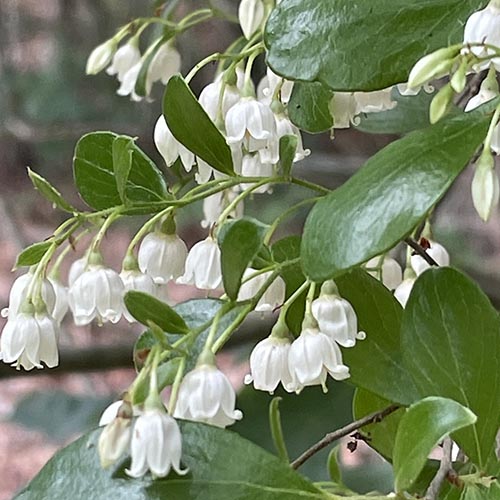
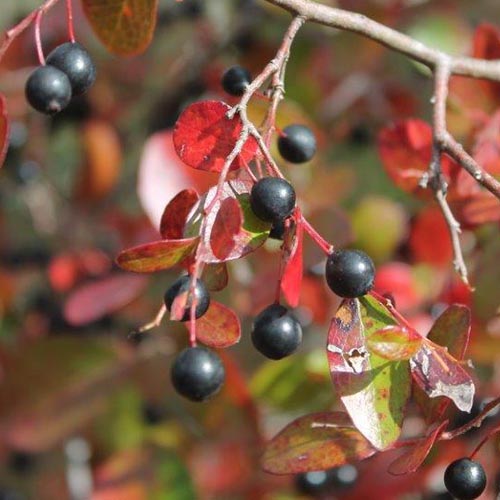
Deerberry (Vaccinium stamineum)
Deerberry is found throughout eastern North America except in the upper Midwest and the far northeast. It is a large, multi-stemmed shrub that can reach 5 to 15 feet tall with a 6 to 12 foot spread. Like other Vacciniums, deerberry will form a thicket.
Deerberry has a very distinctive flower. The flowers are much more open than most other blueberries. It also has long stamens that extend out of the flowers. I think the flowers are reminiscent of nightshade flowers.
In the fall it forms large, green to red or purple berries. Wildlife of all types relish the berries. Deer have a special love the berries, hence the shrub’s common name. While the berries are large and edible, they are considered tart compared to most blueberries and are mainly used to make jelly.
Like most blueberries, the deerberry prefers well drained, moist to dry, acidic soils. It grows in full sun to part shade, with the best fruit production in full sun.
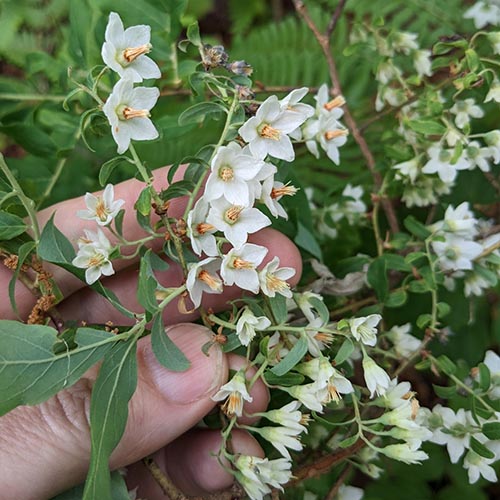
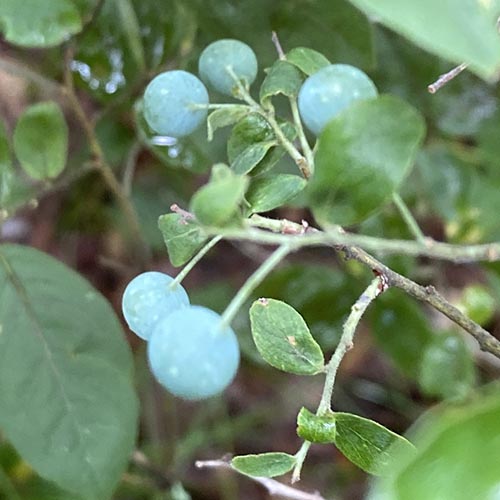
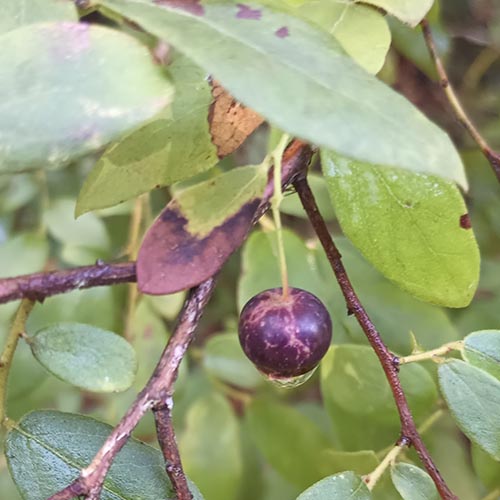
Rabbiteye blueberry (Vaccinium virgatum)
Rabbiteye blueberry is native to the Deep South and along the Atlantic coast to North Carolina. The bushes can grow to between 3 and 8 feet tall with an equal spread.
It has white tubular flowers that produce sweet, dark blue berries. The name rabbiteye comes from these highly desirable berries, but not the ripe berries like you would think. As the berries start to ripen, they go through a stage where they are a pinkish red, which some one thought resembled the eye of an albino rabbit.
Like with almost every other blueberry species, rabbiteye prefers well drained soils that are acidic. You’ll also get the best fruit production in full sun.
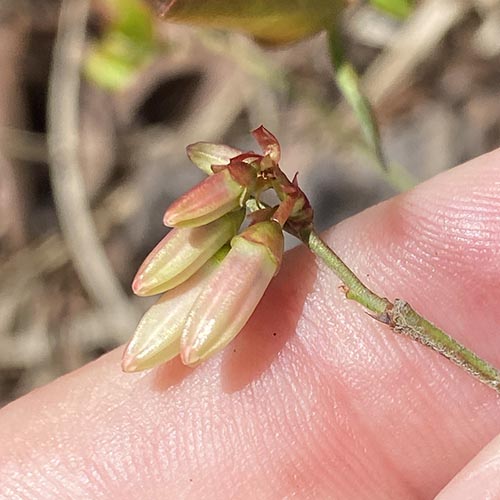
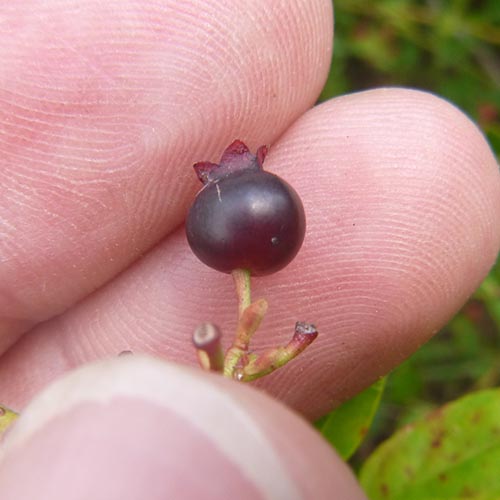
Northern highbush blueberry (Vaccinium corymbosum)
Northern highbush blueberry can be found throughout most of eastern North America. Cultivars of this species are commonly used in most commercial blueberry production, and are what you are typically getting if you buy a generic “blueberry bush” for your home garden.
In the wild, northern highbush blueberry can be a large shrub and can grow up to 6 to 12 feet tall with a 6-to-10-foot spread. However, when cultivated, it is often pruned to keep it much shorter so that it is easier to pick the berries.
It has the familiar white bell to vase-shaped flowers that produce the even more familiar sweet, blue berries. As with most blueberries, it prefers lots of sun and well drained soils that are acidic.
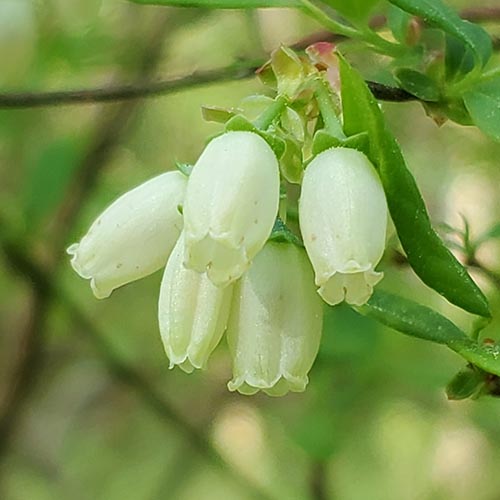
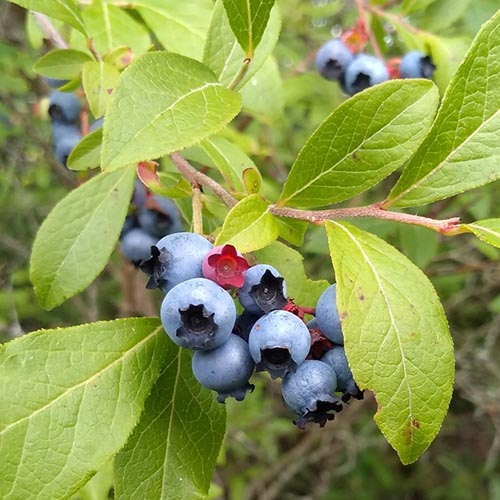
Summary
Our native Vacciniums, what we commonly call the blueberries, are keystone plants which support tons of pollinators and wildlife. They also produce yummy berries which we can eat. Their biggest limitation when it comes to growing them in the home landscape is that most of them require pretty acidic soils. However, one way to get around that limitation is to grow them in a raised bed where you can more easily create and maintain their required soil conditions. If you can’t provide the necessary acidic soils, then you’re better off choosing another type of native shrub or bush to grow around your home.
If you would like personalized help creating your own pollinator and wildlife habitat, then we encourage you to check out the Backyard Ecology™ Community.
There’s lots of great “big picture” information available about creating pollinator gardens or larger habitats for pollinators and wildlife. What’s lacking are opportunities to say, “This is what I want to do. This is what I’m struggling with. How do I make it work on my property?”
That’s part of what the Backyard Ecology™ Community offers its members every day.
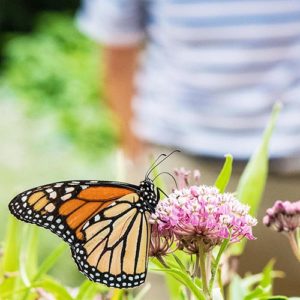
Thank you!
These amazing individuals go above and beyond every month to provide financial support which helps us create so much free content for everyone to enjoy and learn from.
Julie Krygier, Lizabeth, Russel Furnari, Crystal Robinson, Karen Veleta, Kevin B, Sally Mirick, Crystal Dyamonds, Mitchell Bell, Laura Hunt, Sue Ann Barnes, Adrienne Richardson, J. Adam Perkey, Ariel, Cara Flinn, David Todd, LaVonne Fitts, Cathy, Michael, Tom Winner, Eric Fleming, Julie, SB H, Christopher Scully, Craig, Rachel Antonucci, Melissa Egbertson, Switzy, CotswoldsCottageMA, Vilma Fabre, Pia O Nomata, Linda McNees, HerculesBiggerCousin, Patrick Dwyer, Paul Gourley, Lilith Jones, John Master, William Morin, Lori Sadie Ann, Debra, Ayn Zitzman, Han Mad, Isaac Kowis, Cathy Anderson, Betsy Lessels, Reid, Dave Teare, and Debra Moore.
Backyard Ecology™: Creating thriving backyard ecosystems that you can enjoy and be proud of
We created Backyard Ecology™ to help you confidently create pollinator and wildlife habitat that you can enjoy and be proud of. Because nature isn’t just “out there.” It’s all around us, including right outside our doors.
Our focus on the eastern U.S. means that the information we share is applicable to you and where you live. Join us as we ignite our curiosity and natural wonder, explore our yards and communities, and improve our local pollinator and wildlife habitat.

Backyard Ecology™’s Guiding Principles:
🦋 Curiosity: Nature is fun, interesting, and worth exploring. We will never know everything. Answers lead to more questions. That’s half the fun.
🦋 Balanced: You don’t have to choose. You can support nature AND have a beautiful property that you can enjoy and be proud of.
🦋 Science informed: Habitat creation and management should be based on the latest scientific research available. This is true regardless of whether you’re working in a small garden or on hundreds of acres.
🦋 Stewardship: Anyone can make a positive difference in the natural world and leave an ecological legacy on their property.

Leave a Reply